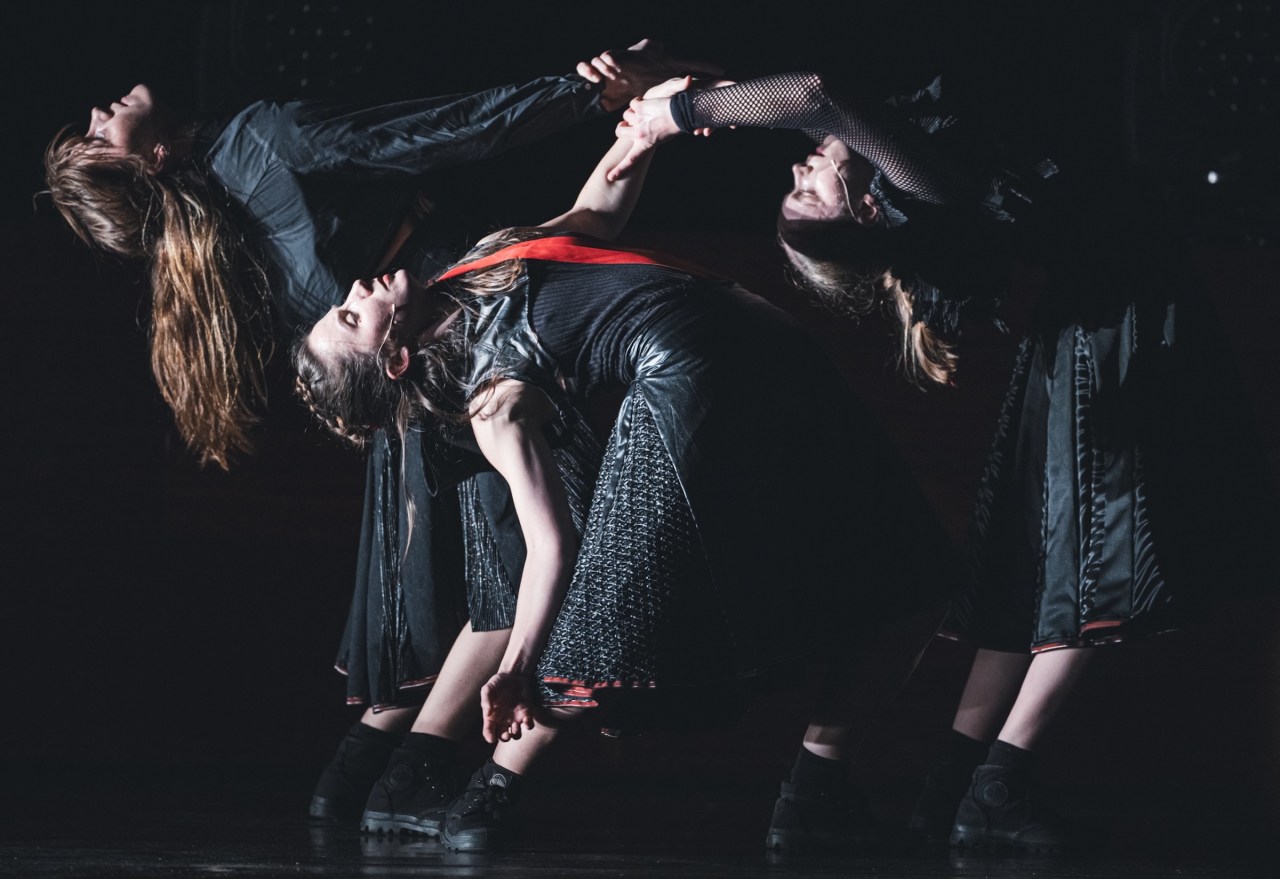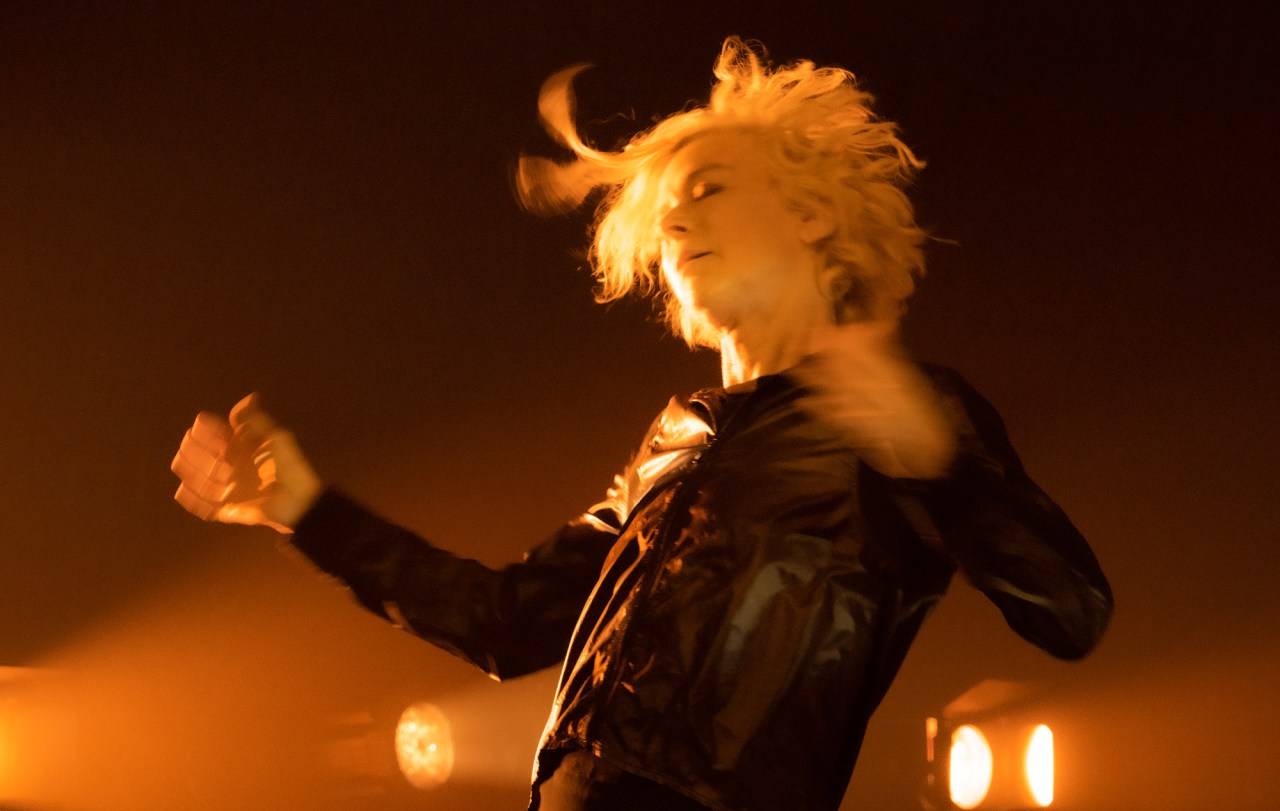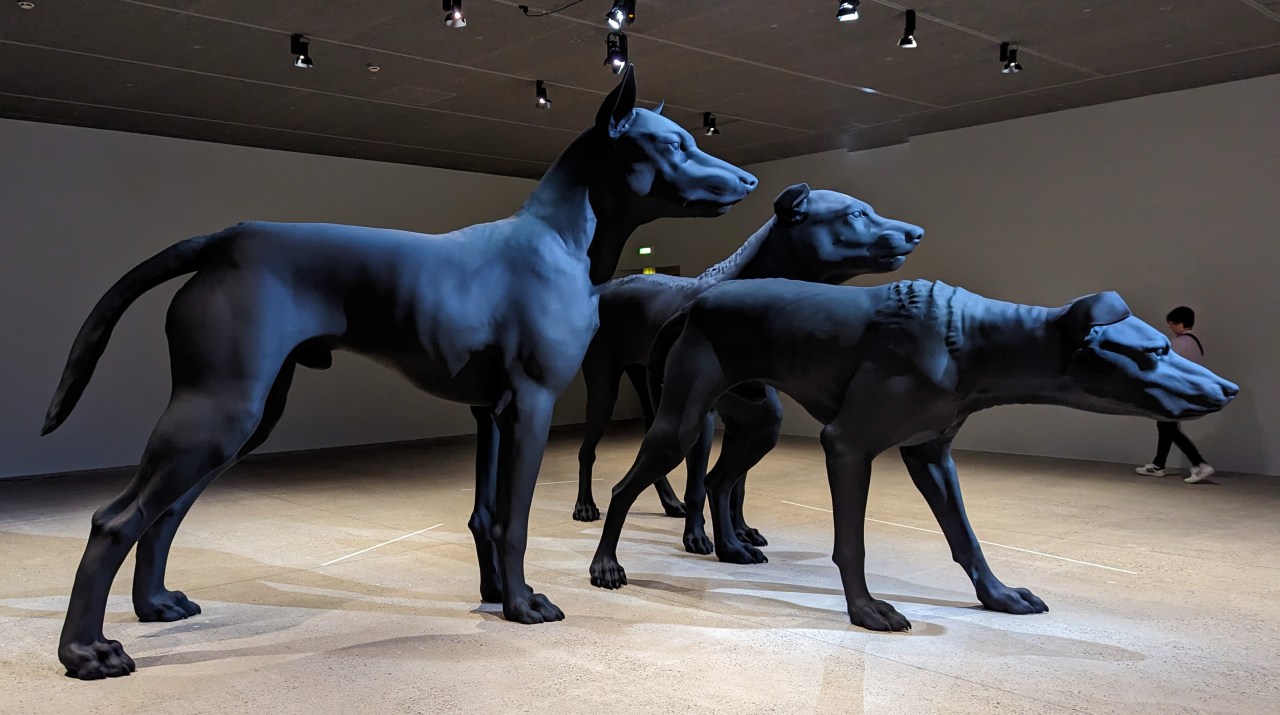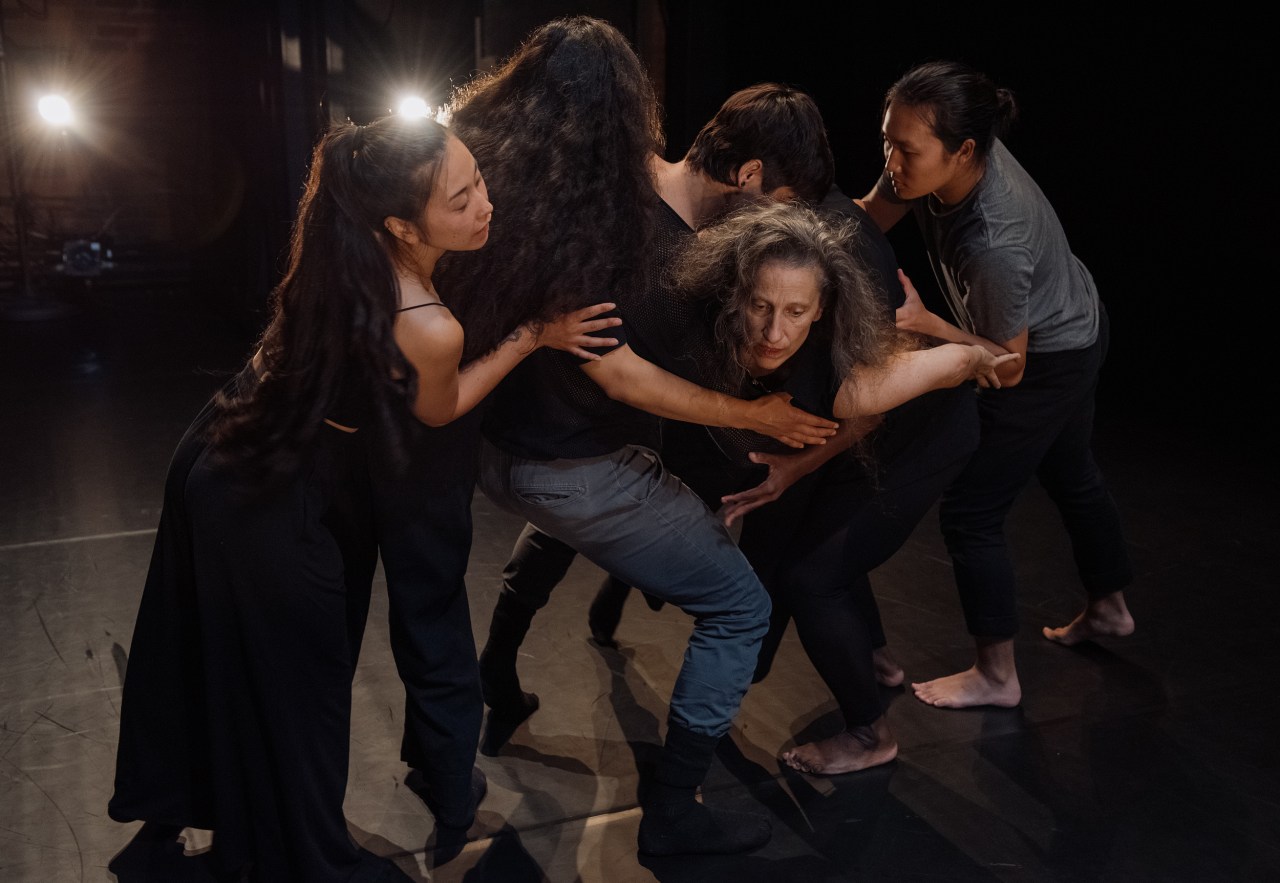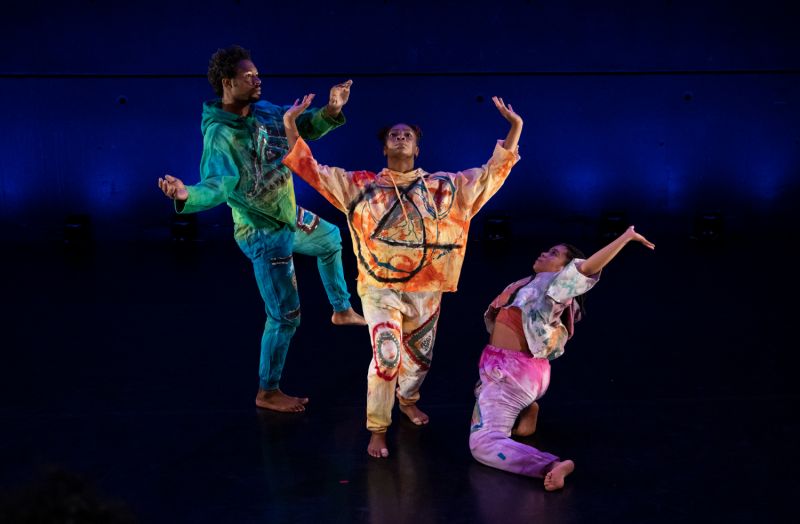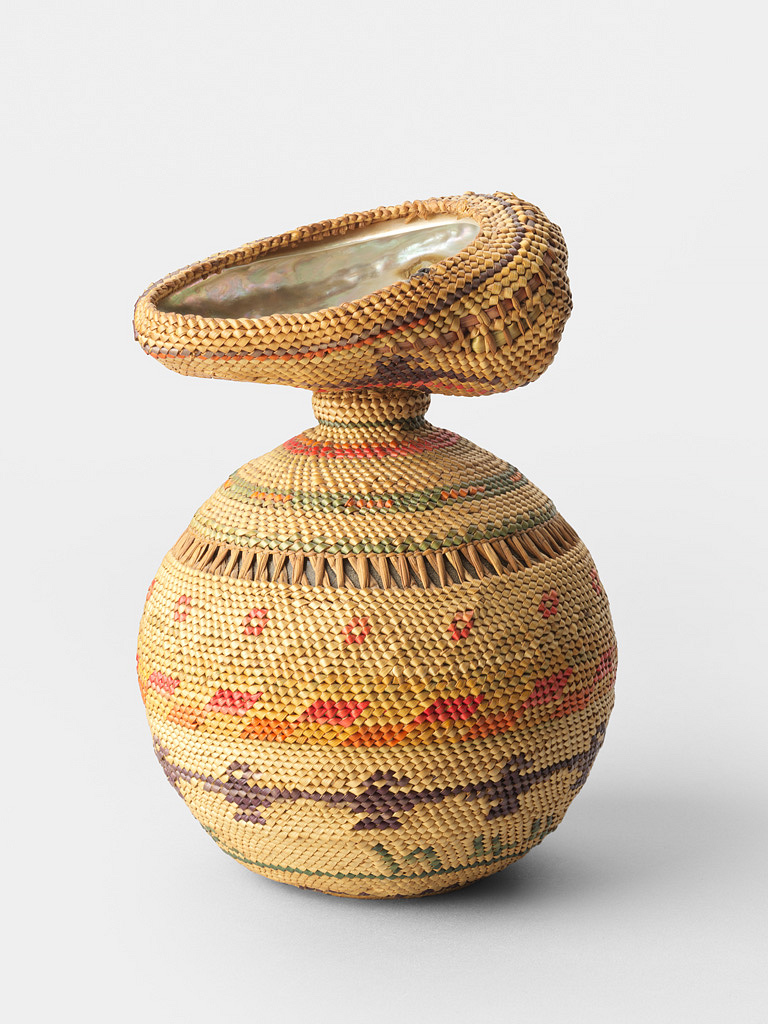“Kaeja d’Dance is driven by a commitment to innovation in the performing arts through the expression of dance and gesture. We explore identity, personal stories and the complexity of the human experience . . . [through] mediums of live performance, dance film and community engagement.”
The mission statement is no mere window-dressing. On the 31st anniversary of the company they formed, in the 37th year of their relationship, Allen and Karen Kaeja are innovating as much as ever. For this dance company, curiosity and imagination have allowed the participants – dancers, composers, filmmakers and directors always their co-creators – to evolve according to the opportunities presented to them.
From November 11 to 13 at Harbourfront Centre Theatre, Kaeja d’Dance presents 31, a double bill that in several ways sums up the themes and direction the company has taken since its founding. In both pieces – Allen’s I am the Child of… and Karen’s TouchX – it is possible to see the fruits of a commitment to innovation and community involvement.
On Zoom from their home in Toronto, the married couple, parents to 29-year-old Aniya and 24-year-old Mika, give a clear account of how they got to this production.
Speaking about innovation, Allen, who came to dance through the martial arts, says of 31, “we are the first dance company in Canada to fully integrate immersive AR in a dance stage production. And Karen’s work is totally cutting edge in the integration of community and professional dancers.”
If there’s a rough division of labour here, Allen’s focus has been on making dance film and technological innovation, Karen’s on collaborating with community. Both have been heavily involved in dance training, which is an ongoing practice for the company, offering workshops to schools, professional dancers and individuals with no prior dance training. As co-artistic creators, they’ve racked up more than forty awards, created more than 200 original works and 35 dance films. They’ve also published EXPRESS DANCE: Educators’ Resource to Teaching Dance.
“We have worked with hundreds and hundreds of dancers over the 31 years. People who brought their beautiful talents to our work,” says Karen. The annual summer series Porch View Dances, inaugurated in 2012, is an example of the meaningful community engagement the Kaejas strive for.
After turning the porches and front yards of Toronto’s Seaton Village into outdoor stages, Porch View has also expanded to other cities. The project, says Karen, is about “honouring people who live in the community we’re working with, revealing the stories that live in the houses and bringing those stories alive on the front porches and front yards, working with professional choreographers.“ The format involves a tour guide who leads the audience around the neighbourhood telling stories from the area, “some true, some less true.”
The development, over seven years, of TouchX is allied to Karen’s work with communities. “It is based on an exploration of touch in all its fabulous and not so fabulous aspects. The fragility of touch, the agency of touch, the wanted touch, the unwanted touch and all the different kinds of responses that touch can evoke.” A late arrival to dance, Karen was drawn to its sensorial aspects at age 18. She alludes to childhood trauma when she talks about how enrolment in York University’s dance program led to a fascination with improvisation and contact dance.
For TouchX, Karen invited different generations of community participant dancers to join the professional dancers on stage. Needless to say, the pandemic, with its enforced social distancing shed a new light on the importance of touch in all our lives. “It’s great,” says Karen of COVID strictures, “because it’s pushed the work. It’s been wonderfully challenging.”
I am the Child of … had its genesis in a Facebook post Allen put up in 2015, reacting to the Harper government’s determination to stop middle eastern refugees from coming to Canada. “I am the child of a refugee,” it was titled. Allen told the story of his father, Morton Norris, a holocaust survivor whose entire family was murdered by the Nazis. He sought to enter Canada and a cousin warned him, “They don’t want our kind here.” But when the government of that day fell, Allen’s father was admitted to Canada. His story exemplifies the value that refugees bring to whatever country they land in. “What do refugees do? My father built a world; he built a community; he made a new family. He was made an honorary police officer because of his work in the community.”
Bruce Barton, a performance director, dramaturg and creator based in Calgary, has worked with Allen Kaeja on five productions. With I am the Child of… they have been co-creators from the outset of workshops and residencies that built the show, which engages 13 dancers, eight live and on stage, five who exist in augmented reality. Audience members for Child are encouraged to bring their devices, for an enhanced experience of the show.
The Kaejas had experimented with AR for a site-specific commission from ArtworxTO that had to go virtual after a new wave of COVID imposed lockdowns. But for this show, says Barton, he and Allen were entering uncharted territory: creating the appearance of live and AR dancers interacting on stage.
“We had to be sure that the AR aspects were thoroughly integrated thematically into the piece, and not just a novelty,” says Barton, who with his partner Pil Hansen (one of Karen’s dramaturgs for TouchX) is an artistic director of Vertical City Performance. To achieve this goal, they engaged Toasterlab, a Toronto-based outfit with experience in using “extended reality” in performance. Edgardo Moreno, who has been composing sound and music for Kaeja d’Dance for thirty years, has created a soundscape for Child that employs the performers voices in speech and song, with no instrumentation.
Allen’s genius, Barton says, is in creating a framework for the dancers to explore different themes in the piece, one of which is “how we connect, or fail to connect, with one another through the stories we tell about ourselves.” (See links below to trailers.)
So, much to celebrate. And when asked what they are looking forward to as Kaeja d’Dance heads into the future, both artistic directors are pretty sure they won’t run out of ideas. What’s more, says Karen, it is vital to engage with younger generations, as the company tends to do.
“Thank goodness for them,” she notes, “because we more mature artists have a lot to learn from their new thinking.”
Kaeja d’Dance: 31 (TouchX + I am the Child of …)
November 11 and 12 at 7:30 pm, Nov. 13 at 2 pm
Harbourfront Centre Theatre, Toronto
Links to trailers: https://drive.google.com/file/d/1VFFhvUpHiVqSM4kWVvXS1iSgZiGvCz7S/view
https://www.kaeja.org/k31
Photo of I am the Child of…: Aria Evans, Karen Kaeja, Ethan Kim, Geanderson Mello, Mio Sakamoto
Photographer: Kevin Jones





